Narrelle M. Harris's Blog, page 41
July 24, 2012
Truths of Sherlock Holmes (Part 1)
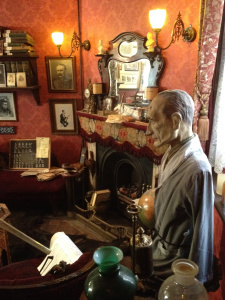 Sherlock Holmes has taught me many things. For a start, that fictional source material is often better than the version of it you’ve seen on the telly; but also that some TV creators do understand the source material and do a brilliant job of recreating it for the small screen, as discussed in my previous post.
Sherlock Holmes has taught me many things. For a start, that fictional source material is often better than the version of it you’ve seen on the telly; but also that some TV creators do understand the source material and do a brilliant job of recreating it for the small screen, as discussed in my previous post.
But there are other, more practical truths that travel writer Tim Richards and I have learned in decades of studying the great detective and his methods.
Here’s a dozen of them, with references to stories which you can read via this link to Project Gutenberg. No, really, it’s our pleasure.
Never trust a colonel. Unless they own a racehorse. Then it’s okay to simply not like him. We don’t know how well this one applies to life, but we’re always wary when there’s a colonel in the offing.
(See Silver Blaze, The Bruce-Partington Plans, The Empty House)
If a family member has a secret past they won’t talk about (especially if they’re from America) – it will end in tears. The basic rule for life being it’s best to be honest with those you love, especially if your secrets might bring them harm.
(See The Dancing Men, The Five Orange Pips, The Yellow Face)
If a stranger makes a job offer or a bid on your house/property that is far too good to be true – it is. What’s more, your life may be in danger. At the very least, they’re trying to steal something from the bank over the road. Time has not dimmed the truth that you should be very wary of something that seems too good to be true (especially if the offer is coming from an exiled Nigerian prince).
(See The Three Gables, The Copper Beeches, The Red-Headed League)
You can tell a lot about a person by their hat. Or by their accessories in general. It’s probably not as easy these days, but we remain fascinated by the idea that a person’s dress and accoutrements can tell you as much about them as the way they speak and what they say.
(See especially The Blue Carbuncle for Holmes’ masterful study of a hat, culminating in the deduction that a man’s wife has ceased to love him)
Never be too impressed by someone’s high station in life or their charming manners. “The most winning woman I ever knew was hanged for poisoning three little children for their insurance-money, and the most repellent man of my acquaintance is a philanthropist who has spent nearly a quarter of a million upon the London poor.” – Sherlock Holmes in The Sign of Four. Conan Doyle and Holmes both knew that while people love stereotypes, they get in the way of discovering the truth. Holmes was always disdainful of class in that sense.
(See A Study in Scarlet, A Scandal in Bohemia, The Bruce-Partington Plans.)
Brandy is a miracle cure-all. It’s astonishing how often Conan Doyle has brandy administered to someone who’s had a shock. But sometimes all you need is a good stiff drink and a minute to collect yourself, before you’re right to go again. We could do with a spot of it now.
(See The Greek Interpreter, where brandy brings a man back from the brink of death by sulphur poisoning. Amazing stuff, brandy.)
For the remaining six truths (and a bonus 13th), click here to read the second part on Tim’s travel blog Aerohaveno.
Buy The Complete Arthur Conan Doyle Collection (45 books) [Illustrated]

Buy Sherlock Holmes: The Complete Granada Television Series

starring Jeremy Brett and David Burke/Edward Hardwicke
Buy Sherlock: Season One and Sherlock: Season Two
 starring Benedict Cumberbatch and Martin Freeman
starring Benedict Cumberbatch and Martin FreemanNarrelle M Harris is a Melbourne-based writer. Find out more about her books, iPhone apps, public speaking and other activities at www.narrellemharris.com.


July 17, 2012
An elementary love affair

Rivalry by essmaa (Deviantart)
Television can be a great motivator of literary good. It was the Hugh Laurie/Stephen Fry series Jeeves and Wooster that took me to PG Wodehouse (to my everlasting gratitude) and it was Jeremy Brett’s turn as Sherlock Holmes in the 80s that brought me to the pages of Arthur Conan Doyle.
Of course, I knew of Sherlock Holmes long before the Granada series was made. Holmes had been a pop culture fixture since the late 1800s after all. He was surely the first ‘show’ revived after nominal ‘cancellation’ (ACD killed him off in The Final Problem because he wanted to write serious fiction) partly because of passionate activity from fans. (This was probably also an early example of ‘if there isn’t a body, we won’t believe he’s dead!’)
But the Holmes and Watson I knew from popular culture were a bland pair. Holmes was an avuncular smart arse, hanging around with his stupid friend. I couldn’t think well of a man who kept an idiot in tow just to make himself look smarter. He was tame, he was predictable, he was, to borrow a phrase, BORING.
But the Granada series opened my eyes to something new, because David Burke’s Dr John Watson was a fit, reasonably intelligent everyman to Jeremy Brett’s acid, snarky, biting Sherlock Holmes and the combination was fresh and exciting. Watson’s warmth and Holmes’s coolness worked well, and their friendship was expressed in so many unspoken ways. When Edward Hardwick later took on the role of Watson, the elements of their long friendship became more delightfully explored in actions and expressions rather than words.
Curious, I turned to the stories and found that snark (on both sides), acid wit, outrageous manners, Watson not putting up with all of Holmes’s crap and Holmes actually appreciating Watson’s qualities as a friend and partner-in-shenanigans weren’t invented for the show. It was all canon!
What was more interesting was how much smarter Watson was in the books than he usually appeared on screen. As narrator, he often made a good number of deductions (especially in later stories, having been trained in Holmes’s methods) though Holmes’s genius was always required for the bigger leaps. He was braver and more physically capable than he had frequently been depicted too. But, as the storyteller, his job was to shine a light on the genius of Sherlock Holmes – so much so that even the readers seemed to forget that Watson actually did so much more as Holmes’s right-hand man than ask questions and make incorrect deductions.
For a law abiding citizen and former soldier of the realm, John Watson partook in a surprising amount of larcenous activity for the sake of justice, or at least because his best friend asked him to. On at least one occasion, he insisted on accompanying Holmes on a spot of house-breaking, threatening to report Holmes to the police rather than let him tackle the villain on his own.
What’s that line about best friends? They not only know where the bodies are hidden: they helped you bury them? In canon, Watson never had to help Holmes bury a body, but you know darned well his first question would probably have been ‘how deep?’.
And for his part, Sherlock Holmes wasn’t just a rather bright and slightly arrogant toff. No. He was mecurial, brilliant, unpredictable, as likely to forget the social niceties as to be unexpectedly kind. He was an uncomfortable, not always likeable man, whose admirable qualities were best seen through the eyes of his not-quite-conventional friend. But Holmes was someone to admire, if not always to like, and the fact that he liked John Watson softened some of his sharper edges.
The pair of them were bohemians, looking for the outre, the strange, the grotesque in life, and not worrying much about what might be considered ‘normal’.
I have since read every one of the ACD stories multiple times. They, like Wodehouse, are my literary comfort food. I generally delight in variations on canon now, as long as there is some nod to the core of what is enduring and endearing about the original material: the cleverness of the mysteries, the sharp and unsentimental characterisation, and the epic friendship of these two very different men.
The latest BBC series, Sherlock, set in modern London, is a fine addition to the celluloid interpretation of the Holmes books, and you can tell it’s made by people who love the original stories. The series is full of little references and nods to the stories, and it maintains the heart of what appeals to me about them.
I love that John Watson admires but is not intimidated by Sherlock’s intellect: that he is confident enough in himself that he doesn’t have to feel belittled by the great detective’s insights. I love that he calls Sherlock on his crap, and that Sherlock is delighted that somebody calls him an idiot, because he can be, about some things.
I love that Sherlock is driven and socially awkward and struggles to become more human just as John works to become more analytical, the two balancing so well, playing off and learning from each other. I love the cleverness of the mysteries, of course, but above all I love the story of this amazing friendship.
I know that Sherlock is sending people back to the original stories in the same way that the Brett series once did for me. Actually, it’s exciting and a bit strange to find people who’ve never read them before and I find myself trying not to give spoilers for stories first published over a hundred years ago!
I remember my first time reading some of those (and many other) stories. The joy of encountering something for the very first time and not knowing how it ends, and reading until 3 in the morning because you just have to know how it ends! And it doesn’t matter if that story was written last month or four hundred years ago. Everyone has their first time encountering a classic; it’s a joy and a delight if you can encounter it fresh, just as the first readers would have done.
And there’s delight in discovering the source material for things you think you know, and discovering how much better, fresher, more thrilling and so much more amazing those stories can be than the sometimes watered-down, domesticated versions we get later.
Thank you, Jeremy Brett, for driving me to one of the eternal loves of my life: the original Sherlock Holmes. Thank you BBC Sherlock for giving my love affair with Baker Street a whole new series to take to heart.
Next post: the top twelve things Tim and I have learned from Sherlock Holmes.
Narrelle M Harris is a Melbourne-based writer. Find out more about her books, iPhone apps, public speaking and other activities at www.narrellemharris.com.


July 5, 2012
Review: Shadows by Paula Weston (AWW Challenge #8)
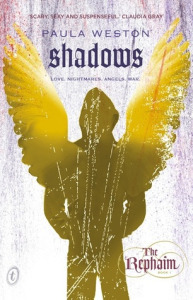 The trends in paranormal fiction have been moving on apace from the vampire standard. Werewolves and zombies have taken their turn as protagonists, and in the last few years angels have moved onto the scene. I haven’t really sought out any of the angelic paranormal fiction, partly because the one attempt I made was full of wafty, superior, rarified and, well, angelic characters that I found a bit dull. I wasn’t sure how the basic background was ever going to translate into textured and rather more human personalities, which I prefer.
The trends in paranormal fiction have been moving on apace from the vampire standard. Werewolves and zombies have taken their turn as protagonists, and in the last few years angels have moved onto the scene. I haven’t really sought out any of the angelic paranormal fiction, partly because the one attempt I made was full of wafty, superior, rarified and, well, angelic characters that I found a bit dull. I wasn’t sure how the basic background was ever going to translate into textured and rather more human personalities, which I prefer.
Then Text Publishing sent me Paula Weston’s Shadows, the first book in the new Rephaim series, and I thought: Oh, this is how it works!
The story is narrated by Gaby, a young woman living in a Queensland beachside town, as she nurses her still tender wounds, a year after the terrible car accident that killed her twin brother.
The trouble is that Gaby isn’t quite what she thinks she is, and there are a lot of people who want to know what actually happened to her and her brother Jude. Well, I say people, but really, all of these visitors, who wish to visit varying degrees of agression on Gabe, are actually the Nephilim, the half-human, half-angel children of fallen angels. They call themselves the Rephaim now, and they are far from what one might think of as angelic.
One of the first on the scene is Rafa, a warrior who featured in Gaby’s recurring nightmares of fighting with demons. Only – are they dreams or memories? Is Rafa a friend or a foe? As those seeking Gaby and Jude start showing up in idyllic Pandanus Beach, the question of allegiances is shifting constantly, because Gaby-now doesn’t remember who she was, or what her alliances were then. She doen’t know who to trust, but then her very human friends get tangled up in these skirmishes and, like it or not, Gaby has to start doing something about it all. But who’s got her back, and will she ever remember who she was?
The story goes at a cracking pace from page one, and is full of fabulous, full-bodied characters like Rafa and Mags, Gaby’s best friend. There’s action, sexual tension, suspense and some hairy moments where Gaby is called upon to do things she can’t remember how to do. Some of the unanswered questions are frustrating, but there the reader shares Gaby’s frustration, because she can’t work out who she was and what happened to her, let alone who to trust.
The Australian setting is distinctive without being overwhelming, and the writing flows smoothly (and with frequent wit) as it rockets along to the conclusion. This first part of the story is wrapped up, although obviously, as the first in a series, there are still a lot of things to learn when you read the last page.
In any case, if you’re a bit lary of angelfic, as I was, this is a great story with a rollicking pace and engaging characters, so if you’re going to try the genre, this is a good place to dip your feathers in the water.
Read the first three chapters of Shadows.
Visit Text Publishing to buy Shadows in paperback or as an ebook.
Narrelle M Harris is a Melbourne-based writer. Find out more about her books, iPhone apps, public speaking and other activities at www.narrellemharris.com.








July 3, 2012
Competition: The Girl Who Was on Fire
 There were two writers who absolutely set me on fire in 2011. One of those was Suzanne Collins and her brilliant (and traumatising) trilogy The Hunger Games. The other was the fabulous Mary Borsellino, with The Devil’s Mixtape. Mary Borsellino sets me on fire every year, actually, although her work is much less widely known than Collins’s. (Her series The Wolf House has been rereleased, if you like your vampires and your punk rock simultaneously.)
There were two writers who absolutely set me on fire in 2011. One of those was Suzanne Collins and her brilliant (and traumatising) trilogy The Hunger Games. The other was the fabulous Mary Borsellino, with The Devil’s Mixtape. Mary Borsellino sets me on fire every year, actually, although her work is much less widely known than Collins’s. (Her series The Wolf House has been rereleased, if you like your vampires and your punk rock simultaneously.)
Where these two wonderful little literary arsonists meet is in The Girl Who Was on Fire, a fabulous set of essays about themes and ideas in The Hunger Games books, including Your Heart is a Weapon the Size of Your Fist, by Borsellino.
I reviewed these essays last year. As I said at the time:
“Everything in this book either brings elements I was aware of into sharp focus or reveals new themes and interpretations to me. With each essay, though, I responded with variations of “Yes! Exactly! YES!”
Now I have (courtesy of Mary Borsellino) two copies of the collection to give away, plus a copy of the first book in the trilogy.
The trick with a Hunger Games-related competition, of course, is to think of a competition that is engaging but not too difficult, but which doesn’t cheapen the themes and ideas which I find so moving and thought-provoking. So – no Hunger Games recipes, no suggestions for what your last meal would be, nothing as obvious as that.
Instead, I would love for people to write to me to tell me who your favourite character was (in any of teh three books) and why. Did you love or hate them? Did they move you? Did a character change the way you thought about something, open your eyes to a new idea, or did they inspire you to try something new (like archery, or baking?)
So that’s it.
THE COMPETITION
Write and tell me in 300 words or less which character from The Hunger Games made the most impact on you and why.
Email your replies to narrelle@iwriter.com.au.
THE PRIZES
The top entry will receive the Movie Edition of The Girl Who Was on Fire, which contains extra essays.
The second best entry will receive teh standard edition of The Girl Who Was on Fire.
The third best entry will get a copy of The Hunger Games
PLEASE DO NOT REPLY IN THE COMMENTS!
Conditions of entry:
It is a condition of entry that I may use your answer or part thereof (quoting you) in my blog, which will be online indefinitely. I’m happy to attach an alias to any quotes, but you need to let me know both your real name and preferred alias in your entry.
The competition will be open for two weeks, from Wednesday 4th July to Wednesday 18th July 2012.
I will select the winning entry that week and post the result, along with extracts from all entries, on Monday 23rd July 2012.
Narrelle M Harris is a Melbourne-based writer. Find out more about her books, iPhone apps, public speaking and other activities at www.narrellemharris.com.








June 13, 2012
The Wolf House returns!
 It’s no secret that I’m a huge fan of Mary Borsellino’s work. Her last book, The Devil’s Mixtape, was one of my favourite books last year (along with The Hunger Games).
It’s no secret that I’m a huge fan of Mary Borsellino’s work. Her last book, The Devil’s Mixtape, was one of my favourite books last year (along with The Hunger Games).
The publisher of Mixtape, Omnium Gatherum, has had the great good sense to take Mary’s previous work, The Wolf House series, and republish them.
The Wolf House books are vampire novels, but they are also about rock music, love, compassion, betrayal, revenge, being afraid and being hopeful. More, too, because Mary Borsellino has grand, passionate, intelligent ideas about humanity and love. Her themes are always complex and deep.
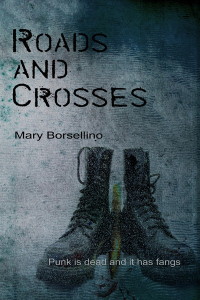 There are five books in total in the series, and Omnium has released the first two so far: Origins and Overtures and Roads and Crosses. Both books are available in both paperback and as ebooks for Kindle.
There are five books in total in the series, and Omnium has released the first two so far: Origins and Overtures and Roads and Crosses. Both books are available in both paperback and as ebooks for Kindle.
If you love vampire fiction, Australian authors, strong and imaginative writing, fresh and brain-buzzing approaches to the mythology, and deft, sharp characterisatio (or any combination thereof) you should definitely pick up The Wolf House!
Narrelle M Harris is a Melbourne-based writer. Find out more about her books, iPhone apps, public speaking and other activities at www.narrellemharris.com.








June 6, 2012
The Mid Year Review
2012 has been an interesting year so far. By interesting I mean, of course, ‘astonishing’, ‘fantabulous’, ‘exhausting’, ‘exhilarating’ and, quite possibly, ‘TOTALLY ACE!”
2012, how do I love thee? Let me count the ways.
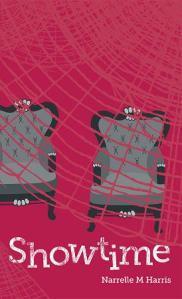 ONE. March 2012: Showtime
ONE. March 2012: ShowtimeI’m pretty sure I’ve mentioned how excited I was to have Twelfth Planet Press invite me to submit to their Twelve Planets series. It was nothing compared to how excited I was to have my submission accepted. After months of work with the publisher, Alisa Krasnostein (a World Fantasy Award winner for her work with TPP) and my editor, Tansy Rayner Roberts, Showtime was released on International Women’s Day. It’s had some great reviews, but more importantly, I’m personally very proud of the work that went into those short stories. For fans of The Opposite of Life, there’s a Gary and Lissa story set at the Royal Melbourne Show. The book also contains a zombie story, a ghost story and a more traditional vampire story set in Hungary, inspired by my travels to that country in 2010.
You can buy Showtime from Twelfth Planet Press.
 TWO. April 2012: Melbourne Peculiar
TWO. April 2012: Melbourne PeculiarWhen I’m not writing fiction (or doing the day job) I’ve been known to create apps. My first one, Melbourne Literary, came out a few years ago. Clearly a glutton for punishment, this year I finally finished my second app – Melbourne Peculiar, a guide to everything that’s a little bit strange about this town.
I’m fond of the tagline: Melbourne is stranger than you know. Because it really is.
The app is a fairly personal collection of the things I find odd: things like floral clocks, and hidden anti-consumer messages in shopping malls, and arcane shops and memento mori jewellery. You can even learn about the resting place of the inventor of Vegemite, discover where to get spam, get eggs and truffle oil for breakfast or find a famous composer’s whip collection.
You can download Melbourne Peculiar for Apple iDevices or for Android devices.
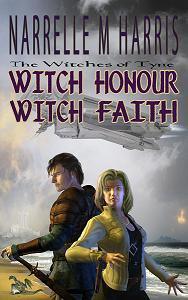 THREE. May 2012: The Witches of Tyne
THREE. May 2012: The Witches of TyneA little while ago, I had the great good fortune to win cover art by the fabulous Les Petersen. Since all my other projects already had covers in the pipeline, I thought it would be the perfect time to release a special omnibus edition of my out of print fantasy novels, Witch Honour and Witch Faith, which had been released in hardback in the US in 2005-2007.
So in between writing and editing books and apps, I set about editing the two novels (doing a bit of an adjective and adverb cull, since I’d become a more concise writer since these were published) and adding several short stories and even song lyrics as extra. The result is The Witches of Tyne. It looks terrific, and I’m proud of the result. Extras will be forthcoming in the shape of an actual song to go with the song lyrics, in due course.
In the meantime, you can get The Witches of Tyne from Amazon.com
from Amazon.com
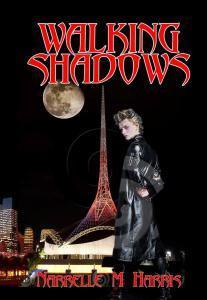 FOUR. June 2012: Walking Shadows
FOUR. June 2012: Walking ShadowsAnd hello June! On Friday 8 June, Clan Destine Press and I will be launching Walking Shadows, the long-awaited sequel to The Opposite of Life.
Walking Shadows will be available as an ebook as well as a print edition: stay tuned for links post-launch!
The cover blurb is from Charlaine Harris’s blog about The Opposite of Life:
“A most unusual vampire novel…if you can get this book, do. It’s really a refreshing take on a common theme.”
Which is pretty darned cool.
So thank you, first half of 2012, for being especially fantastic. The latter half may be technically a little quieter, but I’ll be hard at work on the third of the vampire books, so with luck 2013 will contains booky goodness as well.
Narrelle M Harris is a Melbourne-based writer. Find out more about her books, iPhone apps, public speaking and other activities at www.narrellemharris.com.








June 1, 2012
Book Launch 8 June: Walking Shadows
 I’m very excited and pleased to announce the imminent launch of Walking Shadows, and you are all cordially invited to attend!
I’m very excited and pleased to announce the imminent launch of Walking Shadows, and you are all cordially invited to attend!
Walking Shadows is the follow-up to my vampire novel set in Melbourne, The Opposite of Life (available in paperback at Dymocks on Collins Street and other bookshops, and as an ebook on Amazon.com and Booki.sh)
The launch will be held on Friday 8 June at 5.45pm at the Rydges Hotel in Carlton.
The launch is a free event, taking place at the Continuum 8 convention, but you don’t have to be a member of the convention to attend.
Get all the details by downloading the Walking Shadows invite.
Walking Shadows will be available at a special launch-only price on the night!
Feel free to share the invitation or to RSVP on the Facebook event page. I’d love to see you there!!
You can find out more about Walking Shadows at Clan Destine’s website.
You can also find out more about Walking Shadows and The Opposite of Life at my website.
Narrelle M Harris is a Melbourne-based writer. Find out more about her books, iPhone apps, public speaking and other activities at www.narrellemharris.com.








May 30, 2012
Sculpted books: extended storytelling or mere vandalism?
 As a booklover, you’d think I would be horrified when people take books and cut them up to make art.
As a booklover, you’d think I would be horrified when people take books and cut them up to make art.
You’d be wrong.
As always, though, that response is tempered with some ground rules.
Essentially, if an artist has taken an book (or even a new one!) and carved its pages to make new art, I don’t really find that offensive at all. In fact, I often find it magical or charming.
A book is a twofold thing, you see. It’s the object itself, and it’s the story it contains. When an artist takes the object and creates new art with it, in a sense I feel like it is taking both object and story and extending them jointly into a new form of story telling. I found a picture recently of an old Sherlock Holmes book, with a page cut to create a silhouette of the Great Detective, deerstalker, pipe and all. Light thrown onto that open page cast the detective’s shadow onto a page of His Last Bow. It’s a simple and evocative use of paper and light to emphasise the story by using the object. I think it’s pretty cool, especially since the story is by no means lost to us with this act of creative vandalism.
At the recent Clunes Back to Booktown Festival, I saw multiple volumes of old maths textbooks, way out of date nonfiction tomes on chemistry and the like, pierced through and threaded together to make flag stands. It’s a shame the content of those books was clearly past their use-by date, and I hope the material is available somewhere for historical interest and researchers. It made me a little uncomfortable, I guess, but in a way it was nice to see a book that might otherwise simply be trashed as useless repurposed to sign post the way to second hand and antiquarian booksellers.
And then there was the city hotel I recently visited. The bookshelves in its bar were lines with blue books, by which I mean all the covers were blue. Hardcovers stripped of dust jackets, mainly. I went to take one of the books from the shelf, idly attracted by the title and wanting to flick through the pages: only to find the whole row of books had been skewered and affixed in place on the shelf.
Four shelves of skewered books. Two bookshelves. Eight rows of stories that no-one could read. Eight rows of objects fastened, ugly, like butterflies under glass. Instead of being transformed from one kind of story telling to another, it felt like all of those books had just been killed and pinned down for the much less edifying purpose of mere decoration. Because they were blue. Honestly, if they’d been blue but you could still read them, it would have been interactive, at least. The books would still be alive to interpretation, as objects and as stories. It was having them transfixed by a metal pole that made it feel so awful to me.
Maybe it’s a fine line. Maybe one person’s shallow decorative choices are another person’s artistic expression. Maybe one person’s artistic expression is another person’s brutish vandalism. But if someone came to me with one of my books that they had made into a work of art which expressed something about what the story meant to them, I think I’d be pretty chuffed. It wouldn’t demean the object or the story, surely, to be transformed into a new expression?
Let me know what you think.
Narrelle M Harris is a Melbourne-based writer. Find out more about her books, iPhone apps, public speaking and other activities at www.narrellemharris.com.








May 21, 2012
Outland Competition: Our Secret Lives
 A few blogs ago, I talked about the secrets we have. They’re not necessarily scurrilous or smutty or illegal. They’re just the parts of our lives we keep segregated from other areas, maybe because we think other people will laugh.
A few blogs ago, I talked about the secrets we have. They’re not necessarily scurrilous or smutty or illegal. They’re just the parts of our lives we keep segregated from other areas, maybe because we think other people will laugh.
In the Outland TV series, the characters are all out and comfortable with their sexuality, but they are very much in the closet about being SF nerds.
The fact is, many nerds working in a more mainstream environment prefer to keep their nerdery to themselves. I used to, but mostly I don’t much care what people think about my nerdery these days. On the other hand, my lovely geek friends can be less than understanding about my enjoyment of shows like Glee.
A friend of mine refuses to use the term ‘guilty pleasure’. Either you like someting or you don’t, and there’s no point in feeling guilty about the things you like. (Well, unless they’re unethical, maybe.)
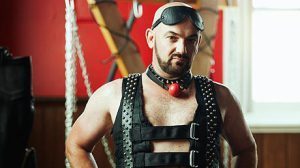 Or, in the words of Andy in episode 3, “You probably think there’s some grand reason for all this, but the truth is, Rae, people like what they like. Don’t complicate it.”
Or, in the words of Andy in episode 3, “You probably think there’s some grand reason for all this, but the truth is, Rae, people like what they like. Don’t complicate it.”
In the spirit of ‘you like what you like’, thank you to everyone who entered the competition for a copy of the Outland DVD. I hope you continue to like what you like, and can do so openly without fear of scorn or ridicule from people who almost certainly have their own secrets.
Among the entries, Philip admitted that “my secret passion is homoerotic romances, cause I like to be a private person”, and fair enough.
Jason shared: “While at High school I was captain of the Rugby team and Head Boy of my school. Little did most people know my secret… That I was a HUGE science fiction nerd, read scientific journals and all, oh and yea also I am gay… I think I would have got more crap over being a sci fi nerd than gay – lol!”
But the winner of the competition is P, who tells the following story.
“My secret isn’t that I’m a nerd and a geek. I’m very open about that – I even have Doctor Who and Battlestar Galactica posters over my desk in my classroom (I teach primary school). My secret is that I like to read trashy romance – of many different subgenres. *Really* trashy stuff. I generally hide this from most groups in my life.
I’ve very selective who within my geek circles knows, as Trashy Romance is seen as the lowest of the low by many of the people I know into who are into books. Telling people I enjoy reading the Anita Blake series or the Sookie Stackhouse series ’cause of the sex and romance earns me funny looks from many geeks, who think I should be reading stuff of ‘higher literary value’. Yes, even geeks can be snobs.
And then there’s my geek friends who are also feminist and feel strongly about romance novels. Some of them might has a few issues with the geek-themed stuff, but they can go on for hours about Mills & Boon/Harlequin style romance novels. I consider myself feminist too, but my own brand of it allows to take guilty pleasure in reading trashy romances with many things I shouldn’t be enjoying, but some other people’s standards, again. It’s kind of like eating fast food; you know it’s not terribly good for you, but it tastes so good you’ll do it anyway.
On top of that, there’s me being a teacher. No way can I admit publicly to my passion for word porn at school. We teachers are supposed to be good, pure, straight, monogamous and asexual remember? No way can we admit we might be reading books full of raunchy stuff. Especially since as well as the Geek romance and the Mills & Boon, I like the queer trashy romances as well. Two guys in love, getting it on? Hot. As. Three guys getting it on? Even hotter.
I can’t tell a lot of my family either. I have a lot of Very Uptight Religious family members and it’s just best they don’t know. I can admit to the mystery novels, or the science fiction novels. If I said I liked Twilight people wouldn’t look at me as weird… but if I admit I like romances heavy on the sex? I’m the weirdo.
And that’s my secret.”
Your secret is safe with us, P, and I promise I won’t judge you. I’m not a huge fan of the romance genre usually, but I recently discovered Anne Gracie (recommended to me by smart, feminist geek-type readers) and I love her work.
Perhaps we should all pledge ourselves to the principle that we may not like to read the same things others like to read, but we will defend to the death their right to read it!
Thanks again to those who joined in, and to those with secret lives! If you missed it, you can get Outland from the ABC shop.
Narrelle M Harris is a Melbourne-based writer. Find out more about her books, iPhone apps, public speaking and other activities at www.narrellemharris.com.








May 6, 2012
Clunes Back to Booktown Festival

Sherlock Holmes, between Erotica and Cats. I suspect the bookshop is using slash fiction as an indexing model…
I’d heard that Clunes and books were on intimate terms, but I didn’t really know what to expect when I showed up on the first weekend in May for the Clunes Back to Booktown Festival. Well, apart from lots of bookstores and a program of speaking events.
Clunes, north of Melbourne and tucked conveniently between Ballarat and Daylesford, is a lovely little historic town. It was the first Victorian town in which gold was discovered in the 19th century, and after a lull it was used as a location for both Mad Max and, later, Heath Ledger’s Ned Kelly film.
Now it’s the newest member of the International Organisation of Booktowns, the first in the southern hemisphere.
In its workaday clothes, Clunes boasts a number of second-hand and collectible book dealerships, mainly open on weekends. (It also has a surprisingly interesting bottle museum, a gold museum and a main street that looks like a time warp to 1875.)
During the Back to Booktown Festival, however, Clunes transforms into a bibliophile’s paradise. This town’s normal population of around 1000 swells to about 15000 over the weekend. A program of talks presents guest speakers and literary topics for the discerning reader. This year’s guests included Alice Pung (Unpolished Gem) and Gina Perry (Behind the Shock Machine).
Alongside the regular bookshops, shops along the main road and in the town hall throw wide their doors and become temporary bookshops, selling books both new and second hand. Several antiquarian dealers set up shop as well, and vast tents appear in the street filled with tables teetering with tantalising volumes. Of course, there are also food tents, activities for kids, a bandstand with a brass band playing unlikely hits from Abba and costumed folks to entertain the revellers.
Mostly, though, it’s packed to the gills with booklovers. We shuffle together, tightly packed, through the wares on sale (many of which are displayed in no particular order, so we move slowly, picking through the boxes for that one treasure we need to fill a gap in our collection). It’s crowded and bustling, but good natured. We’re all steeped in the joy of being in a whole town devoted to books.
All of these old books, some of them quite dusty and stained, are strangely exotic. They are musty paper doorways into other times; not just the worlds of the stories they contain, but the worlds in which those books, as objects, were new. These old hardbacks and their dust covers remind me of the scent of my grandparents sun room, which was full of books like these.
 I only just restrained myself from buying old copies of Arthur Conan Doyle’s Professor Challenger series, just because the books looked so marvellously old and of their time. (I did succumb and get Arthur Conan Doyle: A Life in Letters for only $5 because how could I resist?) That’s certainly the reason I picked up Lola Montez’s Arts of Beauty, a 1982 hardcover reprint of her 1858 guide to the Art of Fascinating.
I only just restrained myself from buying old copies of Arthur Conan Doyle’s Professor Challenger series, just because the books looked so marvellously old and of their time. (I did succumb and get Arthur Conan Doyle: A Life in Letters for only $5 because how could I resist?) That’s certainly the reason I picked up Lola Montez’s Arts of Beauty, a 1982 hardcover reprint of her 1858 guide to the Art of Fascinating.
My favourite buy of the weekend is a 1948 Australian edition of Georgette Heyer’s Beauvallet, not because of the story (I’m yet to decide if I like Heyer) but because of the inscription.
This is an Elizabethan romance set on the high seas, with the fiery Dominica stamping her little foot and attempting to resist the charming advances of the roguish English pirate, Nicholas Beauvallet. Pirates! Bodices! Star-crossed Lovers! Haughty ladies having tantrums! Spanish booty, of all kinds!
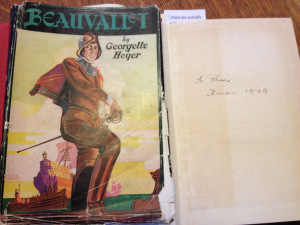 The inscription reads: ‘To John, Xmas 1949’.
The inscription reads: ‘To John, Xmas 1949’.
And so begins a whole mysterious back story! Why did someone buy a romance book for John? Did they not realise it was a bodice-ripper and thought ‘Mmm, pirates, that’ll suit a boy’. Or was John a mad keen Heyer fan? Did that boy love a high adventure romance? Did he rather fancy Beauvallet himself? Was he disappointed with the not-quite-right gift from a family member? Did he secretly love it? Am I being too limited in my interpretation of Heyer readers?
The simple contrast of the style of book with the name of the recipient sets up a dizzying array of potential backstories for this objet de livre.
I can’t help spinning stories, and this simple hardcover has a secret history which I’ll never know. That’s a little sad, but it’s sort of thrilling too. The world is full of small, secret stories.
Whatever the future holds for storytelling formats, maybe these old hardbacks, these mundane yet magical objects, will survive, because there’s more to them than the story printed on the pages.
And thanks go to: Tourism Victoria and VLine who arranged our travel and accommodation for the weekend. Keebles and The Dukes were lovely guest houses, and thanks to the train that now goes to Clunes, I’ll be able to read my booty on the way home.
Narrelle M Harris is a Melbourne-based writer. Find out more about her books, iPhone apps, public speaking and other activities at www.narrellemharris.com.











